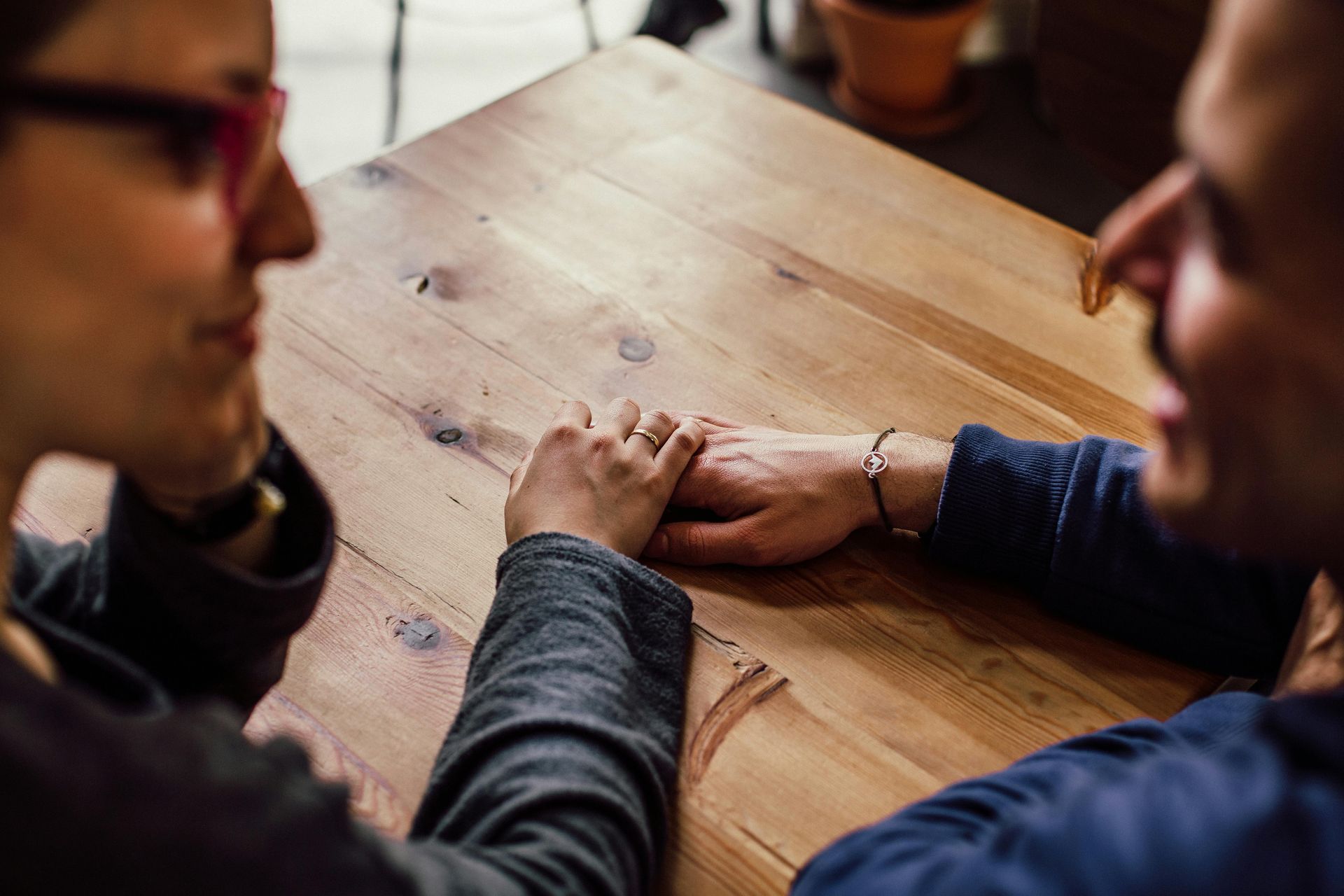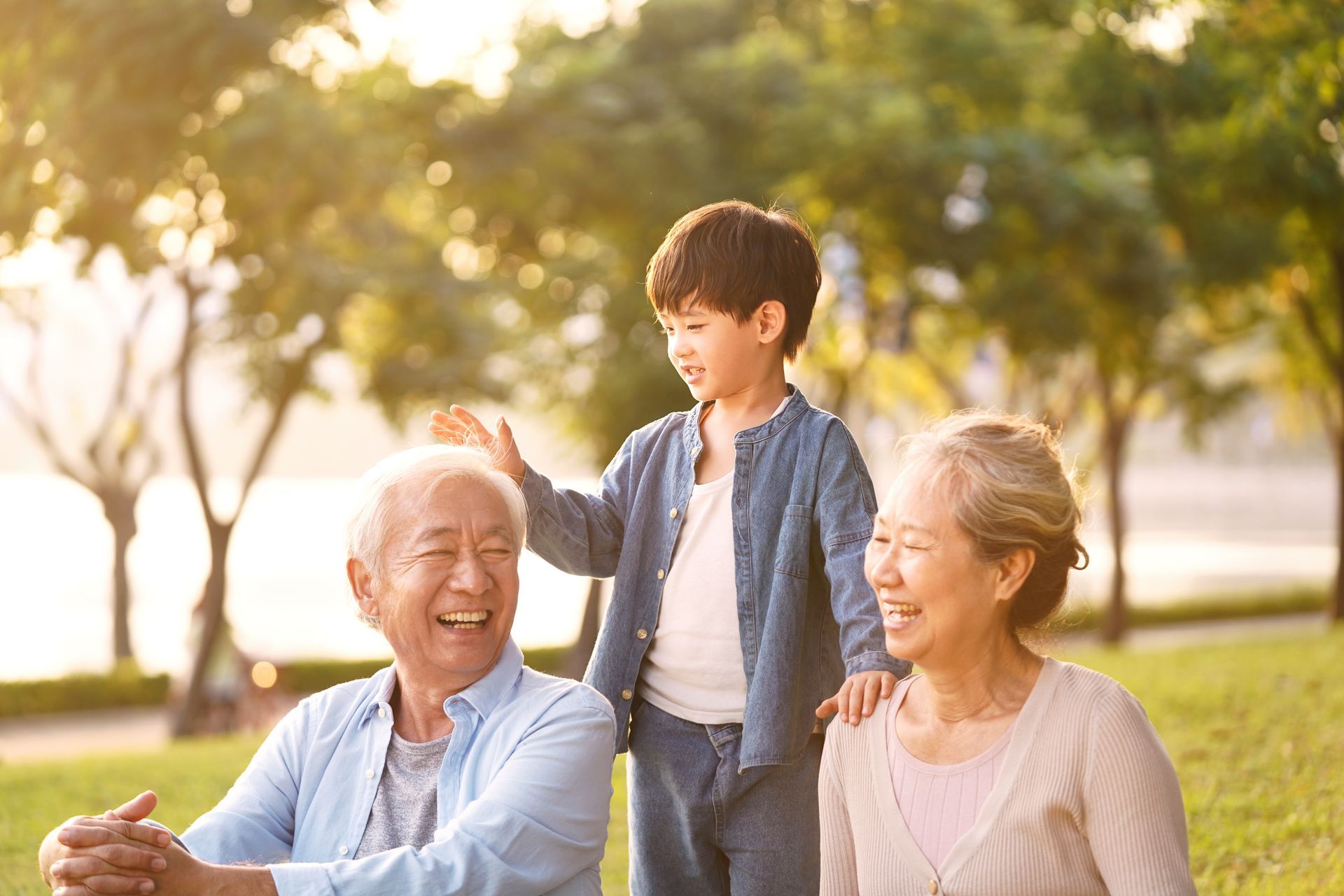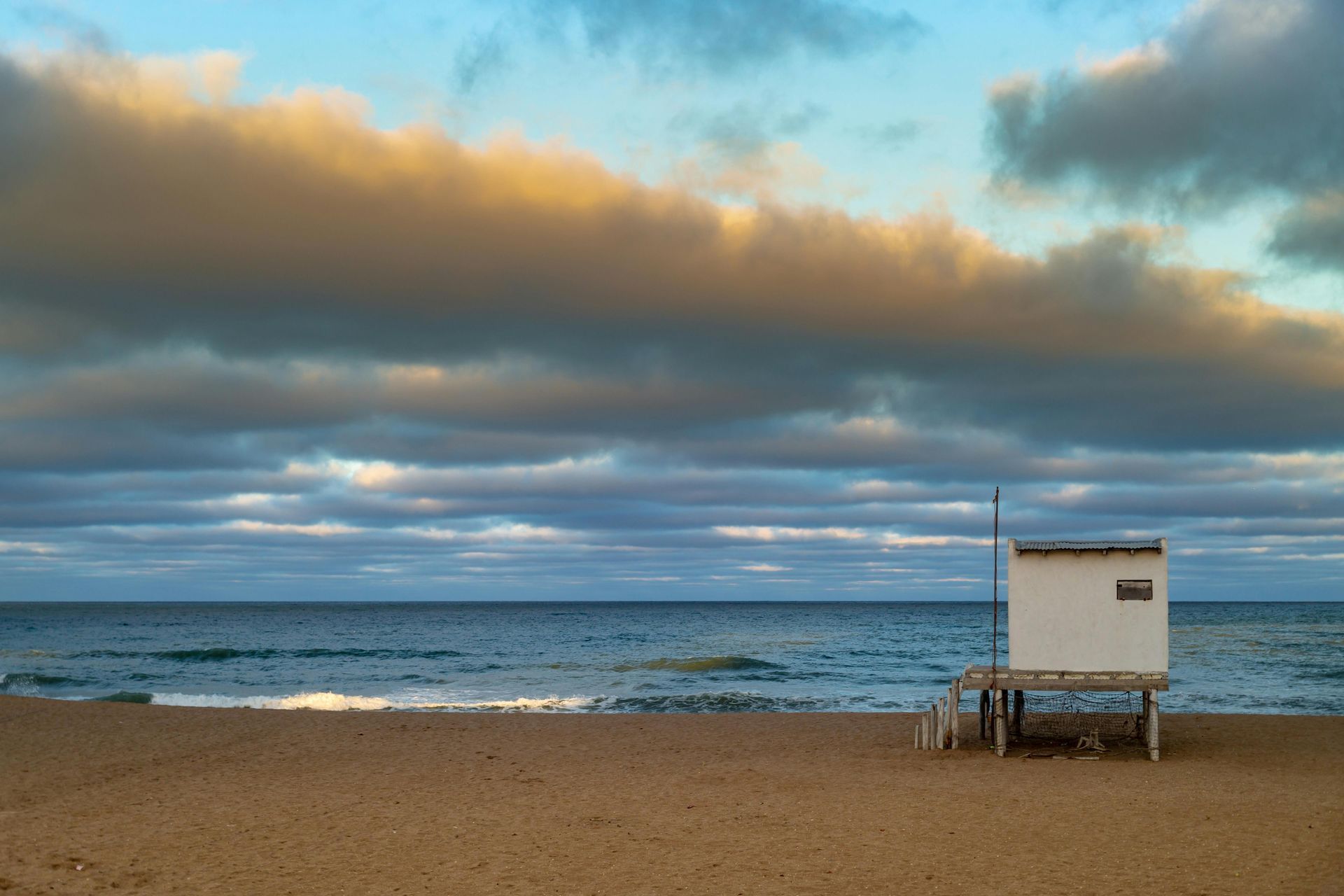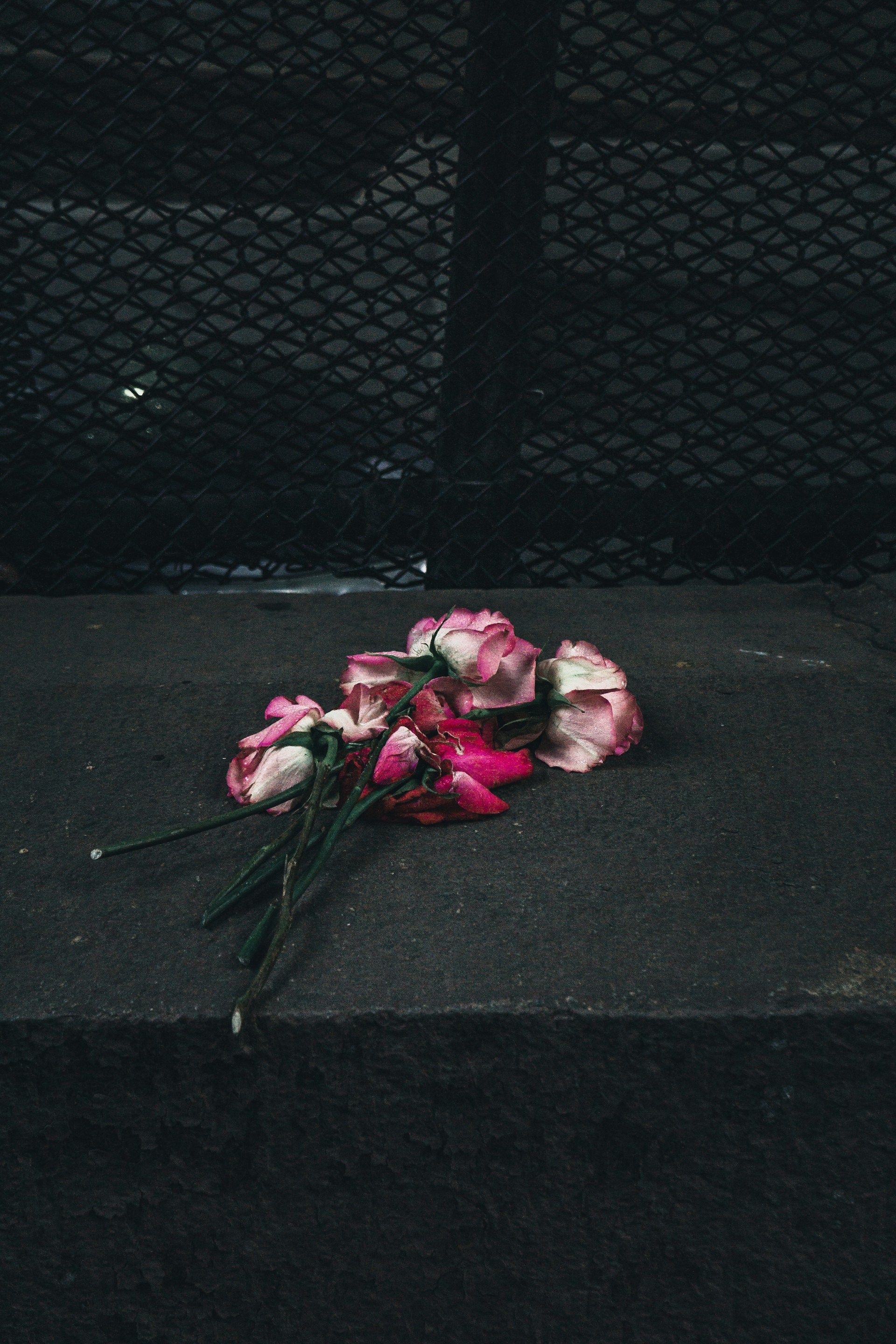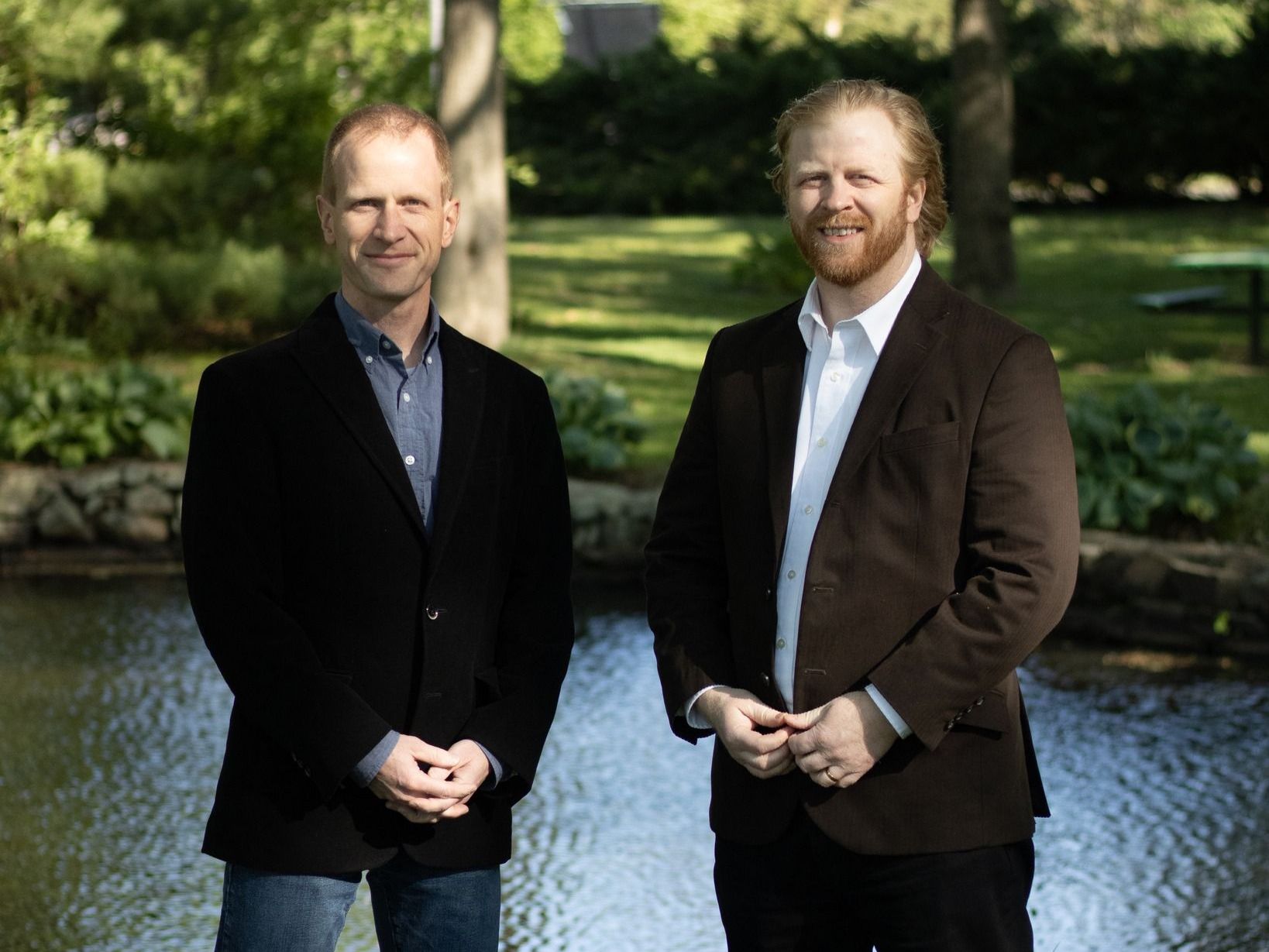Blog
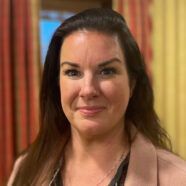
Brigette Gibson, Funeral Director You’re a Quincy native from a large family. You were familiar with Keohane from growing up, right? Yes, through growing up in Quincy, but actually, John Keohane raised his family right across the street from my grandmother. And John’s wife, who I call Miss Wilk, was my kindergarten teacher at Sacred Heart! How did you end up working at Keohane and becoming the Office Manager for the Weymouth locations? COVID, I think for everyone, was a time of change and reflection. My son was five months old when COVID started. It was such a blur back then, but I knew I didn't want to go back to what I was doing. I thought I’d work part-time and be home more with him. So I went on Indeed and saw that there was a job for a part-time bookkeeper here. I thought, “that's great, part-time! I can do that. I can still be home with him. I don't have to send him to daycare full-time. I started as the bookkeeper and I did that for about a year. During that time, I did the books but I also wanted to learn everything. I started listening to people answer the phones. Some of the staff took me under their wings and when they heard me speak with people, they said “you have a knack for this. You make people feel comfortable and you’re trustworthy. You follow through with whatever you say.” John Keohane noticed something in me and one day he came to my office and said “Brigette, I want you to be the Office Manager.” I told him I wasn’t sure. Even though I was never actually part-time, I was working 40-45 hours a week from the start because I loved it and wanted to learn everything. I liked what I was doing. But it’s very hard to say no to John, and so I became the Office Manager (laughs). What did you do before joining Keohane? I went to nursing school. When you’re 17 years old and someone says “what do you want to be when you grow up?” I thought I wanted to be a nurse. I learned very quickly that I didn’t want to be a nurse! I was still trying to find myself and was waitressing and working as a nanny, but it didn’t spark my joy. Something was missing. When I started working at Keohane, I realized that I love the family care that comes with this job. You’re now a full-time Funeral Director! Yes! I passed all my exams last September and was sworn in. What’s the transition been like? Are there days when you wake up and think “I can’t believe this is what I’m doing now?” I’ve enjoyed every aspect, from being the bookkeeper and managing the office to now being a funeral director. I’ve appreciated every single moment. And now that I’m here, I still want to learn, I still want to know what’s next for this career? How else can I grow? There are eight funeral directors at Keohane and each of them has taught me something over the past two years, and they still do. I still rely on them every single day and I’m still learning. It sounds like you’ve received a kind of parallel education at Keohane, in addition to what you learned in college to get the degree. Yes. And the other funeral directors will come to me when they have a billing question or death certificate question, things that I’ve done behind the scenes over the past few years, because as the Office Manager I handled all of the scheduling and death certificate information and calling the doctors and the churches and organizing. What are some of the basic responsibilities of a funeral director? It starts with the first phone call, and it could be a call before someone has passed, or it’s the first call after someone has passed. We’re there to help guide them. We’re not there to tell them what to do; we’re there to help them make decisions. We have to ask the hard questions. Death is still taboo to some people. They’ve never talked about death with their loved ones . It’s counseling people, discovering how they want to celebrate their loved one’s life. We explain to them that if they want to hold visiting hours, this is what’s going to happen. This is what you’ve got to do. And then we sit down together with the family and plan the services. There can be a lot of juggling. Some family members might have different opinions on services. Our job is to guide and educate them on what’s best. And then, getting all of the Mass information and planning the Mass and scheduling visiting hours and services and cemetery info. If you don’ thave a cemetery propery, do you opt for cremation? Cremation opens a lot of options as well, which a lot of families are now choosing, and we as funeral directors can help them plan what to do. You become a kind of therapist in a way, providing a voice of calm when there’s so much difficulty swirling around them. This is already a hard day. You don’t need to make it harder by focusing too much on the smaller details. We’ll help you with all of this. There’s also the aftercare when services have ended. Families go home and they have to sit with some of those feelings. Often they’ll start to get anxious about closing a bank account and what do do with the cars. We’re there to answer any questions a family may ask, and if we don’t know the answer, we’ll try to get them the answer. We’re here to help you. And sometimes when I’m out and about, someone will come up to me and say “oh, you ran my grandmother’s service,” or “you were the funeral director at my uncle’s wake” and they offer such kind feedback. I love that about this job. What does an apprenticeship as a funderal director entail? What are some of the responsibilities that you took on during that period? My apprenticeship was a lot different than most people’s. I never came to Keohane thinking I’d be a funeral director. John (Keohane) said “I see something special in you and let’s work this through,” because I was still the Office Manager! I was educated, I had the skills, but I still wanted to learn everything hands-on that I was learning in school. So I’d go on transfers, I would be in the care center helping as a second pair of hands, observing as much as I could. I’d help set up visiting hours, help on funerals whereever I was needed. We all need to learn. It’s not my family; it’s our family we’re serving. How difficult was it to manage your studies while doing your day job and maintaining your family life? I went to school full time and I still raised a family and I just got it done. I took summer courses. I took winter courses. I had a goal that I was going to get this done in less than two years. And I did. It was a blur. I couldn't tell you about the past few years. But I'm really proud of being able to do that as a mom and working full-time. Just being a mom and going back to school in my late 30s… you guys can do this! Just just put your head down and power through it. The industry is changing quite a lot. Americans are becoming less religiously affiliated. Cremation is becoming a much more popular option than it used to be. How do you adapt to meet the changing needs for funeral care? Ooh, good question! As funeral directors, now we can become creative. We can make services that much more personable and build them around what the family wants. I’ve been lucky enough to have a few families that didn’t want to go to church but still wanted a service.It might take a little longer to pull some of the information out of them, but once we do, we’re able to dig into our creative sides. I felt that I was able to do that with some of these families that wanted to choose their own service, and I got to know the decedent that much better. I got to know who I was serving. I had a service for a Deadhead (Grateful Dead fan) a few months ago. The decedent’s brother told me that he liked the Dead, followed the band around for a long time. So everyone wore tie dye to the funeral, they shared stories about traveling around the U.S., and we played Grateful Dead music. The man’s nephew got up and sang a Grateful Dead song with his guitar. When they were leaving, the man’s brother said “this is exactly what he would have wanted. This is exactly how his friends saw him. This was the closure that we needed. What are your favorite parts of the job? Oh God, there’s so many! I like the initial arrangement with the family. I feel like the families come in so nervous. They don’t know what to expect. We just start to talk. I don’t jump into the arrangements right away. I’ll listen to someone share their stories and their memories for as long as it takes. I truly enjoy that aspect, getting to know them. I’ll ask them about their family member who’s passed, and they often will start sharing stories and memories right away . And towards the end of the service, when the family will stop and take a moment to say “thank you, thank you for doing this.” I always tell them that they were doing the hard work. This is what I love to do, and it’s a gift. Keohane does a lot of outreach in the community. What are a few of your favorite local community organizations? It’s been awesome to see Dennis (Keohane), especially, have such a passion for the playground or the skate park. I’m most passionate about Quincy, since I’m born and raised here. I love seeing the Keohanes involved with the Quincy 400 and Interfaith Social Services and the annual coat drive. We’re a staple of the community. You can contact Brigette Gibson via email: brigette@keohane.com or call 781.335.0045. Meet the full Keohane team here .
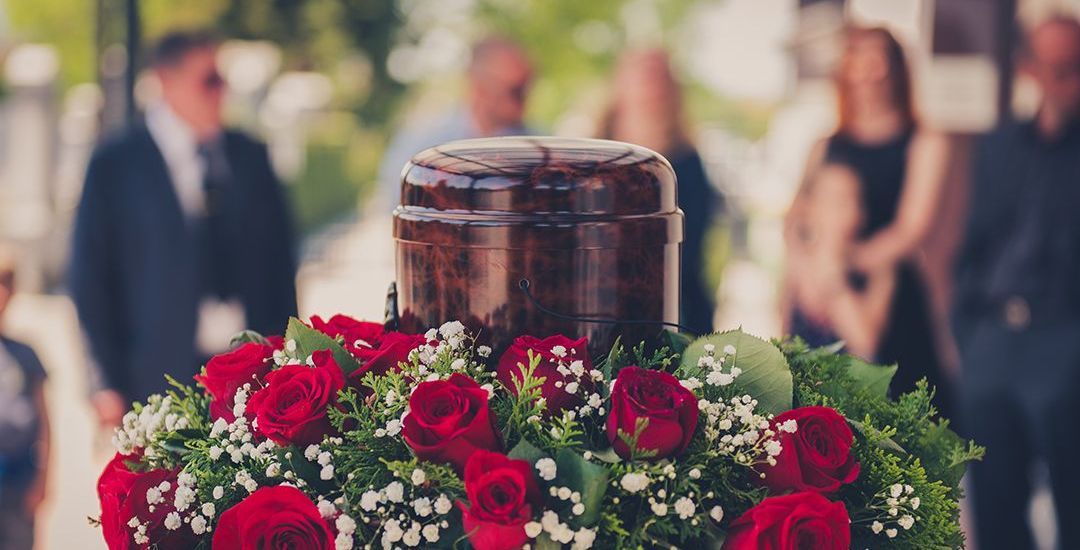
Cremation has become an increasingly popular choice for end-of-life arrangements. Per the National Funeral Directors Association, 62% of people opt for cremation, nearly double the volume of people choosing a traditional burial. Despite the rising volume of cremations in the U.S., misconceptions about the process persist. This blog post aims to dispel the most common myths, provide you with factual information, and help you in making informed decisions regarding cremation. Of course, you are always welcome to speak with a Keohane team member to answer specific questions or learn more in-depth what our process entails. Myth 1: Cremation Is Environmentally Harmful Fact: Traditional cremation involves high energy consumption and emissions. However, advancements have led to more eco-friendly alternatives. For instance, water cremation, also known as alkaline hydrolysis, is considered gentler and more sustainable than conventional methods. Additionally, you can choose a biodegradable urn or scatter ashes in meaningful locations to further reduce environmental impact. (We can help you arrange a scattering of ashes on land or sea; learn more here .) Myth 2: Cremation Limits Memorialization Options Fact: Cremation offers a variety of personalized memorialization choices. Beyond traditional urns, ashes can be incorporated into special jewelry , artwork, or even planted with a tree to create a living memorial. These options provide families like yours with meaningful ways to honor your loved ones. Myth 3: Religious Beliefs Prohibit Cremation Fact: While some religions have specific guidelines regarding body disposition, many have become more accepting of cremation. It's essential that you consult with your spiritual advisor to understand your faith's current stance, making sure that your choices align with your beliefs. Myth 4: Cremation is Less Respectful Than Burial Fact: Respect and dignity are paramount in both cremation and burial processes. Keohane Funeral and Cremation adheres to strict protocols to ensure that the deceased is handled with the utmost care, regardless of the chosen method. We hold sacred the tremendous responsibility you’ve given us in your time of need. Making an Informed Decision When considering cremation, take the following factors into account: Personal Values: Consider your environmental concerns, spiritual beliefs, and personal preferences. Family Wishes: Engage in open discussions with family members to ensure that the chosen method honors collective sentiments. This is another reason why advanced planning is such a worthwhile investment of your time. Financial Considerations: Cremation can be more cost-effective than traditional burials, though your costs will vary based on the services you choose. Legal Requirements: Familiarize yourself with local regulations and ensure all necessary documentation is in order. At Keohane, we understand deeply that choosing between cremation and burial is an intensely personal decision. Our compassionate team is here to provide you with comprehensive information, answer all of your questions, and support you in making the best choices for you and your family’s values and wishes. Contact us today to learn more about our cremation services and how we may assist you in arriving at your best choices.
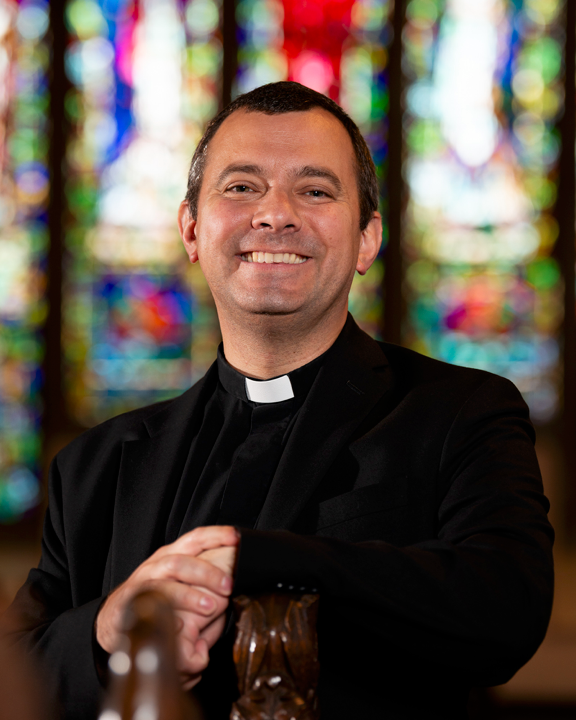
Father Ed Thornley joined St. John the Evangelist in July 2024, Previously, he served as Day School Chaplain and Associate Rector at St. Patrick’s Episcopal Church and Day School in Washington, D.C. A native of the U.K. from Canterbury, he studied theology at the University of Exeter, Westcott House in Cambridge (England) and Yale Divinity School. He served in the Church of England for eight years, before beginning his ministry in the Episcopal Church in Fort Worth, TX when he served as Middle and Upper School Chaplain at All Saints’ Episcopal School. Father Ed and his wife, Dr. Devon Abts—a Massachusetts native and theologian specializing in religion and the arts—reside in the rectory with their cats, Spyro and Duke, and enjoy a wide range of activities together outside of their pastoral duties, including hiking, cooking, enjoying music and the arts, and traveling. You’re the 9 th Rector of the Episcopal Parish of St. John’s the Evangelist in Hingham. What do your responsibilities as rector include? I'm the priest in charge of the parish, and Rector is a traditional title for that. I oversee the parish. I have responsibility for worship, for pastoral care, for preaching and teaching and and also helping the church to be a presence in the wider community. We're obviously a Christian community and an Episcopal Church specifically, but we also play a role in the wider community as well, connecting with different organizations and institutions, civic responsibilities, and so on. So in a way, my main role is to help lead the parish in being that Christian presence in the community. We have, on a typical Sunday, between 130 and 200 people, although we have around 4,000 members in our parish directory, and growing. It’s a big church. Coming from the U.K. and the Church of England, how do the Church of England and the Episcopalian Church interact? It’s a close relationship. There's what's called the Worldwide Anglican Communion, and it's a network of churches internationally that all historically trace their history back to the Church of England and to the Archbishop of Canterbury. So the Episcopal Church is one of those churches that was born out of that history and tradition. I was ordained in the Church of England. My wife, Devon, is American, and we met over here, and so when we were thinking about moving back to the U.S. after being in the U.K. together for some years, I could transfer quite comfortably to the Episcopal Church here. Please share a bit about your background. What should readers of this newsletter know about you? My wife, Devon, is an academic theologian, and we met at Yale Divinity School. I was on an exchange program over here; I was at Westcott House in Cambridge and I came to Yale for one semester. Devon was starting an academic course at the same time when I came over to do some of my ordination training, and we met in classes one day, and that's how we got together. Devon and I have family on both sides of the pond. We like traveling a lot. We have family and friends all over so we enjoy traveling. We're very big on hiking and cycling and getting outside. We also love cooking. We're vegetarians, but we're not too fussy anyway (laughs). We've got two cats, and we like spending time with our friends and family and getting involved in the community, just getting out and getting to know people. We just love learning and being among people. You’ve been Rector for just a few months, having been brought on this past summer. How’s the experience been so far? What’s been a bigger challenge than expected? What’s been a pleasant surprise? Although we arrived here in July, my official institution is on November 19, when the Bishop of of the Episcopal Diocese of Massachusetts will come and officially install me. It's been a really joyful move overall. I've been in specifically education chaplaincy for some years, having served parishes before, and so my role at St. John’s is a happy return to pairsh life. Though this is actually the first time I've been a Rector of a parish. I've been an associate and I've done basically the same kind of job before, but this is the first time I've been in charge. There are lots of new things to get used to; as well as being a priest who has responsibility for worship, pastoral care and preaching and being out in the community, I also have to oversee all the technical things, like, the finances and buildings and grounds committees and all the different organizational administrative elements. I've done those things before, and I enjoy them, but there are a lot of things like that to get used to very quickly. It’s been both a joy and a challenge in that respect. But the community has been so welcoming; they’ve made it easy, frankly. It's a very vibrant community, very active, people who really care about each other and about Hingham as well as about the church. We've loved it. It's been great! Were you amazed at how many Dunkin’ Donuts there are in the area? (Laughs) I love it! It’s one of the things that brought us back to New England. You’re working on a Ph.D. in Divinity. Please shed some light: how does this work inform your philosophy as a member of the clergy? What does Divinity mean to you? Gosh, that's a really great question! So divinity is the same as theology. Those two terms are kind of interchangeable, really. Divinity or theology essentially means talking about God, studying God and faith and religious belief, generally speaking. And for me, that's within the Christian faith, obviously, but, my Ph.D. is, in a nutshell, about how Christianity relates to other religons as well. It originally began as a project about school chaplaincy, but I’m also looking at how school chaplaincy works in the wider life of the Church, and how the wider church and very specific roles, like chaplains, can inform one another. Because normally, when we think of chaplaincy, we think about working at a specific institution, like a school or university or hospital or the armed forces, and so on. And it's often seen as being quite an isolated form of ministry. Whereas I've always been interested in thinking about how, even if you're a chaplain, say, working in a school with a very specific community, how what you do in that community can be informed by the wider church and vice versa. For example, one of the things that a chaplain in an education institution spends a lot of time doing is working with people of all different faiths. All faiths and none, as it were. I'd actually spend most of my time leading worship and providing pastoral care for people who are not Christians. The wider Church community both cares about this and needs to understand how that works further given the diverse nature of our society. Even though I’ve been in Episcopal and Church of England Schools, and so working in a church-based institution, they’re also profoundly multi-faith communities, and so interfaith dialogue is a real passion of mine. I love working with different faiths and again, connecting to that wider community piece. I'm a member of several different organizations that do a lot of interfaith work and also with humanism and other forms of belief and spirituality that are not necessarily tied to a specific faith community as well. And I love all of that and I engaged in a lot of this work when I worked in education chaplaincy. I was also a university chaplain for a while and did a similar thing. And so my Ph.D. is looking at questions like, what does it mean to be a Christian in a profoundly multi-faith, pluralistic world? How Christians be responsible with their faith, and how can they have a healthy, responsible faith, where you know what you believe but can learn alongside other faiths. Remembering the importance of dialoguing with people who believe different things to you informs my ministry in parishes as well. This goes back to that civic responsibility piece and the wider community. And this includes doing funerals…I did a funeral recently for a family who didn't have any particularly strong ties to the church, but the person who died, in their wishes they left behind, said that having a funeral in a church and then a traditional burial was really important to them, and so it was a lovely opportunity to connect with the family who otherwise might not have set foot in the church. And so my Ph.D studies are about looking at different approaches to Christian theology, engaging with religious pluralism and then applying some of that theological thinking to ministry. For example, how can a chaplain in a school or university or a priest in a parish take those theological ideas about the relationship between Christianity and interfaith dialogue, and then apply them in ministry? For example, caring for someone who has different beliefs, preaching and teaching in a way which is compassionate, which is not forceful or coercive, trying to think about ways of being a healthy, responsible Christian in a multi-faith world. That's my general area. The moment that we are in in America right now, where there's so much divide and polarization, these interfaith dialogs are essential in bridging some of those gaps through interfaith dialog, including the humanistic aspect, seems so critical. Yeah, exactly. And that's also something that I've always believed to be really important. I've never been the sort of Christian who, to put it bluntly, goes going around telling people what they should or shouldn't do. I believe that God is love and that’s why I'm a Christian. I believe that God in Christ shows us a new way to live. And that's all about love and compassion and listening and also growing and learning from people who don't necessarily share the exact same beliefs as you. Without turning this into a sermon...but if God became a human being and spent time on Earth among people, then that kind of incarnational ministry, that’s what Christians like me are called to do. If we're serious about our faith, we don't just go out thinking we've got all the answers and tell people what to do. We're out there to meet God through other people, through our relationships and our communities and our encounters with other people who are very different to us. That's part of what it means to be human. Father Ed, you first came to the United States in Fort Worth, and then went to D.C. Was it a big adjustment culturally to find yourself suddenly having gone from Cambridge, England to Fort Worth, Texas? Without boring you with my whole life story, it was a big jump. I was at Cambridge for my ordination training, and then briefly Yale, and that's how I met Devon. And then when Devon finished up at Yale, and I was getting ordained, we got married in Boston, and then Devon got her visa and we were in the U.K. for 8 years. We were in Norwich first. I was in a six-parish team there, and then we moved to central London, and I was working in schools and universities as well as parishes. Devon was doing her Ph.D. at the time in London. Then we moved to Fort Worth, and then D.C., and then here. We both wanted to be back in the States, to be nearer Devon's family as well. And I wanted to be back in the Episcopal Church again--the Church of England's great, but I wanted to serve the Episcopal Church again. So, to start, I got the opportunity to work at an Episcopal School as a chaplain in Fort Worth. It was an opportunity that opened up. But even though I'd been traveling to the U.S. for nearly 10 years, and particularly the Northeast, we knew Fort Worth was going to be a bit of a jump but it seemed like fun, you know. We met some wonderful people there and we ,oved it, but, yeah, it was a culture shock given everywhere else we’d lived prior. You’re married to a theologian; your dinner table conversations must be fascinating! We’re really nerdy. I mean, like, seriously, embarrassingly (laughs). Even though we've both been working in education for a long time, and as you may have seen in my on the bio on the website, Devon still works in academic theology, does conferences and works at different universities, but she's also working for a nonprofit now as Research and Operations Director for the Clemente Course in the Humanities. Devon really wanted to branch out as well and be involved in nonprofit work, wider education work, working with underserved communities. I wanted to be back in the parish again and be out in the wider community. And both of us as a couple wanted to find a nice new home church and a parish that we can both be involved with. And so this whole thing has been really important to us as a couple, as well as a church family. So everything from our dinnertime conversations through to how we generally kind of roll, really, as a couple…we're very, very nerdy, and faith and theology is at the center, but we just love this kind of thing. The last question is, who do you root for in the Premier League? That's a great question! So, back home, between my mother's family and my father's family, there was always a big rift with this; basically, half of the folks love Tottenham Hotspur, and the other half love Chelsea. I didn't follow football that closely, but when we used to live in Norwich, I used to go see Norwich City play quite a bit because we lived quite close to the stadium, and that was really good fun. So I kind of got into it more through that, but I always tried to avoid the Tottenham and Chelsea thing because I just didn't want a family feud! Norwich City, I generally follow them. I'm always quite curious to see what they're up to! Learn more about Father Ed and The Episcopal Parish of St. John the Evangelist: https://bit.ly/4fVD9QL.

Community Spotlight: New England Burial at Sea LLC New England Burial at Sea , founded in 2006, is the largest coast-to-coast provider for customized ash scattering memorials and full body burials at sea in the United States. Based in Marshfield Hills, the company operates year-round from more than 87 ports and 86 different ships. Captain Brad White leads New England Burials at Sea LLC, and we spoke with him at length for this feature. How long have you been a ship’s captain? How did you get into ash scattering and full-body burials at sea? I’m from the South Shore originally, and earned degrees in management and marketing at Ithaca College. After 20 years traveling the world while working for Sharper Image in San Francisco, I left the product business for the ocean. I earned my Master Captain’s license in 2005, though I’ve been boating since I was a young teenager. One day, a fellow that we were doing a fishing charter for said, “Hey, can you scatter my uncle’s ashes?” I said “sure,” and so one become 20, then 2,000, and we became a real business. Now, we operate from Maine to Miami, San Diego to Seattle ports. The business has evolved from scattering ashes at sea off of Scituate with passengers aboard, and then we got into air scatterings, where we use a Cessna 172 high-wing aircraft and geo-target cremated remains over a special area for the family. We typically do that in the Northeast, where we have a better complement of airplanes. Burial at sea has a long maritime tradition for sailors that have passed away while at sea. How has this become a growing trend for consumers seeking a ceremeony for cremated remains or full body burials at sea? Around 2009, we started getting calls about full-body burials at sea. Selfishly, I kept saying no because I didn’t want to scratch the teak in the back of my really nice boat. Finally I realized that we can’t say no anymore, so I went to the Boston Public Library and studied full-body burials at sea back to the Constitution days and just replicated it. Then, we buffed up a 300-year-old tradition to be something special for families that choose to do a full-body burial at sea, because they’re different from a scattering family. How big is your team? With 80-something boats operating out of 80-something ports, it sounds like a large operation. It’s kind of like a champagne taste on a beer budget, because our model is not to own boats, it’s to use boats, very much like a Zipcar model. We use a boat for 2-3 hours and we don’t have to pay for a full-time crew or the service or the maintenance. We have about half a dozen people, three or four captains, a pilot, a PR person, a web person, an inside accounting specialist, and we’re growing by leaps and bounds. When we first started in the full-body side of the business, the United States, as reported by the U.S. Navy, did two in the year 2009. They don’t do very many, and they refer a lot of business to us, because we’re able to assemble and get out to sea in 2 to 10 days, while the Navy, at no charge, can take 6 to 18 months, which is gut-wrenching for a family. We’re very mobile and quick to react when necessary. We work with about 28 different religions, so we are compassionate and as specific to that family’s religion as we can be. How did people find out about your services? We had a pretty strong advertising campaign with radio, television, and print, and people learned about us. They learned they could do a full-body burial at sea. People often say, “I did not know how to do this, where or how to fulfill my loved one’s last and final wish.” They are quite relieved when they learn that we can make it happen for their family. Every time we take somebody, and we’ve taken thousands of people to sea over the years, we’re the talk of the town that next Monday when people say “hey, you know what I did this weekend?” And so when people learn about the full-body burial at sea, they say “sign me up! I’m not going to die now, but in the future I’d like to commit my body back to the ocean and feed Mother Earth.” We have over 2,350 pre-need families right now, and we do take reservations when somebody has a finite period. For instance, they want to go out next June 15 because their person has passed for scattering (of their ashes). You use old-fashioned cannonballs to weigh down the bodies. Where do you get the cannonballs from? I was at the funeral director show in Boston in 2009 and developed this with the Navy. The sea burial shroud that we use is made of organic cotton and designed to degrade. People want to become part of the ocean. So the funeral director puts the body into the burial shroud and brings the shrouded body to the final committal—the boat. We then have our at-sea service, which can include some readings and some music, and then we raise a Burgee flag, which is a yacht flag that has 8 stars on it to indicate the eight bells and watch blessing. We fly that flag in a person’s honor and hen we ring the bell 8 times, and then we choreograph to their favorite song, the placement of the cannonballs. The family usually picks up the four 37.5 pound cannonballs, 150 pounds in total, into the burial shroud. The cannonballs are made at a secret factory here in Massachusetts. We have the mold. The typical cannonball for Old Ironsides is 8 to 8.5 pounds; ours are 37.5 pounds. They’re designed to be part of the burial shroud, the bottom part separate from the body. This is one of our patent-pending ideas and they work really well. When it’s choreographed to music, the family can gently slide he body overboard and it goes quickly. Then we mark the coordinates where we are and fire off the ship’s cannon as a finale farewell. We circle the area then we come in, and we have to deploy in at least 600 feet of ocean depth. That’s different from a scattering, which needs to be at least three miles offshore with no ocean depth requirement. The full-body burials need to be at least three miles offshore and at least 600 feet of water depth. Here in Massachusetts, we depart out of Newburyport or Plymouth or Hyannis, and the typical round trip on a full-body burial is about six hours. In New York, it’s 12 hours round trip because we have to go out 100 miles to get to 600 feet of ocean depth. It’s a whole day, then. You make a whole day out of it. We help with catering. On a 12-hour day, we suggest a hot breakfast, cold lunch, and a hot dinner. On the way back now in the Massachusetts area, we suggest a hot breakfast and some roll-ups or similar foods on the way back. People sometimes want a full bar. We encourage responsible beer and wine on the way back but we prefer people leave spirits at the dock. It’s not a booze cruise, it’s a memorial cruise. And we have all types of things—people can add bagpipers, caterers, musicians or whatever they can dream up as long as it’s legal. Because the shroud is designed to decompose, what’s the impact on marine life? Are you feeding the ocean floor with the remains, in a manner of speaking? When everything biodegrades, the only things left are the cannonballs, and they have great value because they form their own reef. Reefs are structure and are good! They’re good for lobsters and small fish to hide in. So there’s a lasting ocean-friendly effect from that. Can family and friends attend services? Yes, friends and family can absolutely attend. Out of every 100 events that we have, 85 are scatterings, 10 are full-body burials and 5 are airplane scatterings. Eighty percent of these are civilian and 20% are military and people can absolutely come out. We do a fair number of unattended scatterings because folks are located on the West Coast and can’t make it, or they’re on a business trip overseas. We photodocument everything, and then we send them pictures, and we also optionally offer a GoPro unedited event video that they can share. We now have StarLink, the first in the burial-at-sea business, which allows us to have internet access up to 100 miles out to sea, so we can now broadcast worldwide in real time to Aunt Mary in London and cousin Joe in South Korea so they can see and pe part of what we do from afar. We can also FaceTime a scattering event so that friends and family can witness this in real time virtually. Doing so allows these folks to offer a reading or two for those aboard to also be a a part of, which is very therapeutic for those who can’t make the ocean journey. Tell us about the discounted Military Burials at Sea. What does that entail? During the first phone call, people say things like “Grandpa never really talked about being in the Army and he was in WWII.” And my first response is, well, the grandchildren should see what he earned in his achievements in the Army.” They’ll say okay, and then we’ll get the decedent’s DD214 discharge paper showing honorable discharge and then we arrange with the military--there are 5 different branches of the military-- to come to the boat prior to departure. I read about the 13 folds to the flag; I read about the soldier or sailor, I read what Taps means, and then I talk about the service people that are there and what their experience has been. Then I kick it over to the Color Guard and they unfold, fold, and present the flag while sounding Taps, which is quite nice and there’s not a dry eye in the house. Then we board that family on the vessel, do a safety briefing, and head three miles out to sea. That’s very poignant for the family that had a military loved one that passed away. We handle it 100%, we don’t charge for it, and it’s quite meaningful to the family. We do give a discount via making a donation in the decedent’s name to Wounded Warriors or the U.S. Coast Guard Foundation. We do that quite regularly. What’s the difference between scattering remains at sea and doing so over the ocean from a plane? What’s the benefit of scattering by a plane versus having the remains dropped from a boat? We do more female pilot scatterings by airplane than males and what’s pretty cool about that is that Charles Lindbergh created a product that we buffed up with my Sharper Image experience and rebardned it as the “Air Glide,” which allows you to geo-target cremated remains over a certain area. For instance, between Groton, Connecticut and Montauk, N.Y. or up by the Isle of Shoals, because Dad always vacationed in Maine and he was an avid pilot. We don’t bring the family with us because of liability. We have a tarmac-side family service and then we load the plane and put the cremated remains in the Air Glide device, which resembles almost like a bread bag. It has a Velcro air valve on it, and when we’re up flying, I open the starboard port window and then release the valve. The Venturi Effect is the rushing of air that pushes the cremated remains out of the device and not into the airplane—and we are photo documenting this all the way. When we take off, we scatter red rose petals on the first runway pass over the airfield and then we head out to sea, get about 400-1,000 feet of elevation and we try to find some whales, which are pretty cool, and then we circle the area, dip the wings, come back and meet the family and give them the exact coordinates with six burial certificate coordinate sheets showing date, time, latitude and longitude. Are there specific scattering locations so that people can remember where their friends and family were scattered? Yes. There are a gajillion lighthouses in the Northeast, all the way down to the Outer Banks. We tell folks, “when you look at the water, you’ll always see me.” So many times, they opt to go out near a lighthouse that they frequented growing up as a kid. Many times, there are harbors like in Scituate or Boston. There are three lighthouses, Boston Light, Graves Light, Minot Light, and of course Scituate Light. People like that a lot because rather than visiting a cemetery, people like to come back and see the lighthouse and say “that’s where dad started his next journey.” What’s a ballpark fee structure for your services? Scattering at sea unattended/photo documented is $975. For six passengers, it runs about $2,375. For up to 20 passengers, it runs about $3,875. For a full body burial, because we have a bigger fuel burn heading offshore, it runs $16,500 and that includes the boat, the burial shroud, the cannonballs, the crew, the admin fee, the vessel gratuity, and then on top of that are the funeral director fees like care and custody and paperwork. If they have an event in the funeral home and the body may have to be embalmed. We prefer unembalmed, refrigerated bodies. There's no law against it or for it. But the bottom line is, less is more, and it also helps them with their cost basis. So our cost is about $16,500 for full-body sea burials. What should people reading this Keohane Newsletter know about New England Burials at Sea? A number of things! One, we’re experienced, 21 years and counting. Two, we have white-glove customer service and we are a reflection of the funeral home. We strive to make everything as perfect as it can be, so that the funeral home hears “Hey, Dennis and John, that was an amazing event at sea” and it’s a reflection of them. Our goal is to cater to the people that are living, because we hear all the time, “Mary, Joe would have loved that” or “Bob, Mary really loved the ocean, and he did a really nice thing for her.” So we really cater to that part of the family dynamic group. We are proud to be working with the Keohane Funeral home group for just over twn years now They are Sea Burial Certified™ by us meaning they have been trained on best methods and practices both in the class room and while at sea. Keohane is really professional, flexible and eager to please their client family with our unique sea burial offerings. The other thing to know about us is that we’re properly licensed, we’re properly insured. People come from all over the world to use our services. We work with all of the militaries. We work with the FBI, the CIA, the Secret Service. They use us because we’re discreet and confidential and we do it right, we don’t cut any corners. The next piece is, we’re flexible, we’re reliable, we’re dependable, and we’re honest. We’re on the boats every day doing burials, not Joe on the lobster boat with flies and fish guts! Our people are well-attired, they’re experienced, and they’re compassionate. Learn more about Captain Brad White and New England Burials at Sea here: https://www.newenglandburialsatsea.com/ . You can reach Captain Brad via email: OceanBurial@aol.com or by calling 781-834-0112.
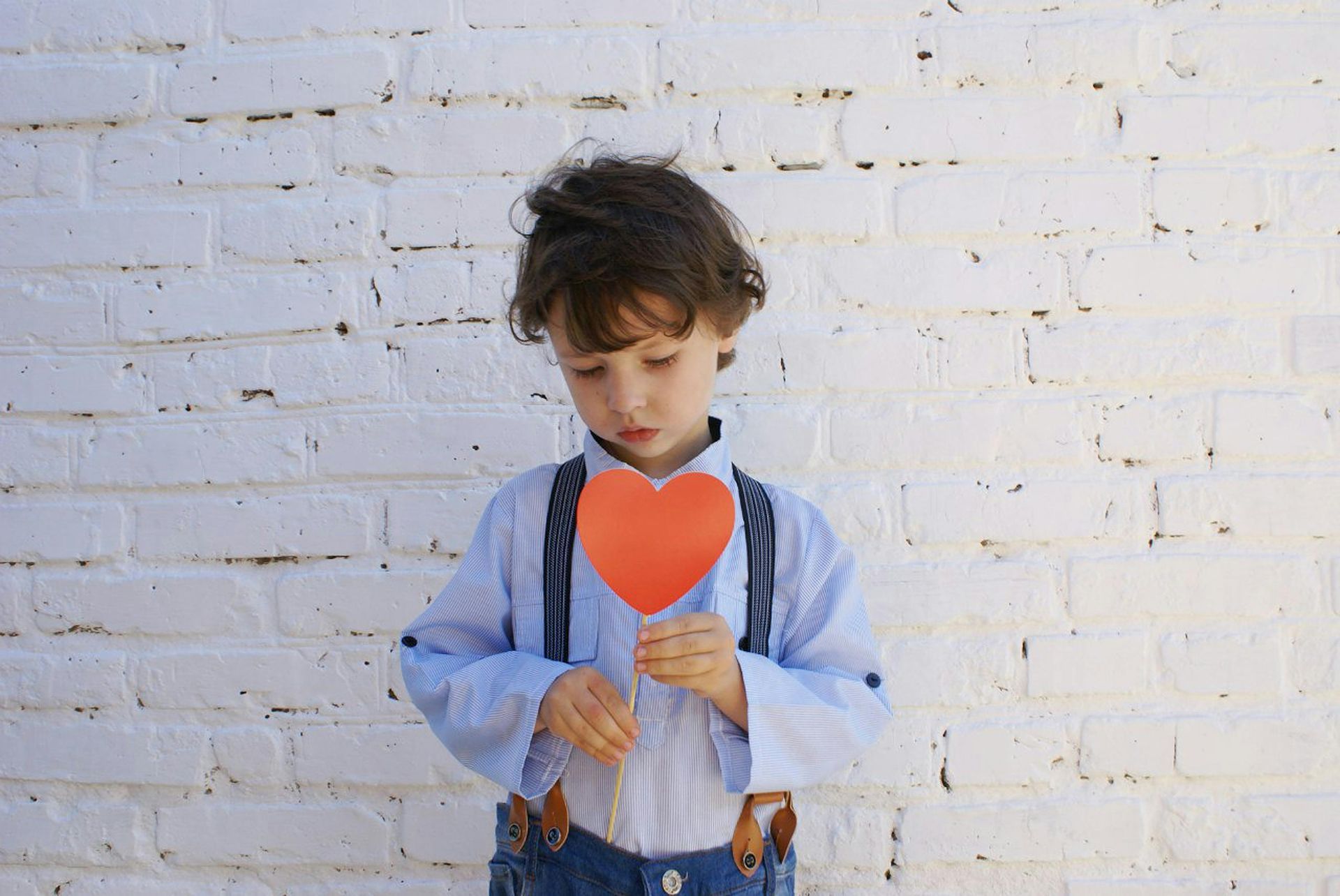
Losing a loved one is one of life’s most difficult experiences. For children, the loss of a family member, friend, or beloved pet can be especially challenging, because they’are still learning to understand much of the world around them. For adults like you, whether a parent, grandparent, or guardian—helping these kids navigate their grief can feel like a monumental task in the midst of your own grief. Children process death differently from adults, and so it’s critical to provide them with the right support that meets their specific needs in order to help them cope and heal. How Children Understand Death at Different Ages Children's ability to grasp what loss and death means varies depending on their stage of development. Tailoring your approach based on their age can help ensure they feel supported and understood. You know your kids best—you may have a precocious 4-year-old or a 10-year-old with developmental delays. Use the below as a suggested guide: Preschoolers (Ages 3-5): At this stage, children may not be able to comprehend that death is permanent. They might see it as temporary or reversible and may ask many questions. Simple, concrete explanations are helpful for their understanding. School-aged children (Ages 6-12): Kids in this age range begin to understand that death is forever. They may seem very curious and as such will probably ask lots of detailed questions. It's important to answer them honestly though gently, giving them a sense of comfort while you’re validating their feelings. Teenagers (Ages 13-18): Teens are capable of understanding death as well as adults do, yet they can struggle to express their emotions. Encourage open conversations with them, offering a comfortable space to process feelings in their own way, whether by talking with you, writing about their loss, or engaging in creative activities like art and music. How You Can Support a Grieving Child Here are five ways that you can embrace to help kids process their grief in a healthy and constructive manner: Create an Emotional Safe Space Let children know that it's normal and okay to feel sad, angry, or confused when death hits home. Acknowledge their emotions and reassure them that all of these feelings they’re feeling are normal. Give them enough time and space to express their grief without feeling rushed or judged. Use Simple, Honest Language Skip euphemisms like "passed away" or "gone to sleep," which can be confusing to young children. Instead, explain death to them in straightforward terms, like "When someone dies, their body stops working and they can’t come back," for example. This helps children begin to accept and then process the reality of what has happened. Encourage Questions! Grieving children often have a ton of questions about death, and it’s important for you to answer them as clearly as possible. Sometimes, kids will ask the same question repeatedly. While this may be annoying to you, it’s their way of coming to terms with a powerful sense of loss. Offer Reassurance Children may begin to worry about their own mortality or that of others close to them after experiencing a traumatic loss. This is normal! Reassure them that although death is a natural part of life, most people live a long time, and you’re there to keep them safe. Memorialize the Loved One Creating personal tributes to the person who has passed away can help children cope with their grief. This could be drawing pictures, sharing stories, planting a tree, or lighting a candle in remembrance. Religious rituals may be helpful here too. Resources for Supporting Grieving Children Books and online resources can provide much-needed additional support and offer children deeper resources to help them better understand and cope with loss. Books on Grief for Children The Invisible String by Patrice Karst A beautifully written book ideal for younger kids, this book explains the concept of an invisible string connecting us to our loved ones, even when they are gone. When Dinosaurs Die: A Guide to Understanding Death by Laurie Krasny Brown and Marc Brown This book offers a gentle introduction to the concept of death for children ages 4-8, helping them understand what it means and how to cope. The Goodbye Book by Todd Parr This colorful, comforting book reassures children that grief is natural and provides simple ideas for expressing their emotions. Tear Soup: A Recipe for Healing After Loss by Pat Schwiebert and Chuck DeKlyen Although suitable for all ages, this book is particularly helpful for older children, offering a metaphorical approach to grief and its various emotions. Online Resources for Families Dougy Center The Dougy Center is a national leader in supporting grieving children and families. Their website offers a wealth of resources, including articles and videos on how to help children process grief. Sesame Street in Communities Sesame Street in Communities offers engaging activities and videos to help young children understand and express their feelings about loss. Child Mind Institute The Child Mind Institute provides expert advice for parents and caregivers, offering tips on how to talk to children about death and grief at every developmental stage. Conclusion Helping children through grief requires patience, honesty, and compassion. By providing children with clear explanations, encouraging them to ask difficult questions, and offering them the space needed to express their feelings comfortably, you can help make this challenging experience more manageable for them. Remember, you don’t have to have all the answers; simply being there for them, acknowledging their feelings, and using helpful resources will go a long way in supporting them as they heal. If you're facing a challenge like this and need additional support, the team at Keohane is here to help you. We can offer guidance, connect you with grief counselors, and provide resources that can help support your family through loss.
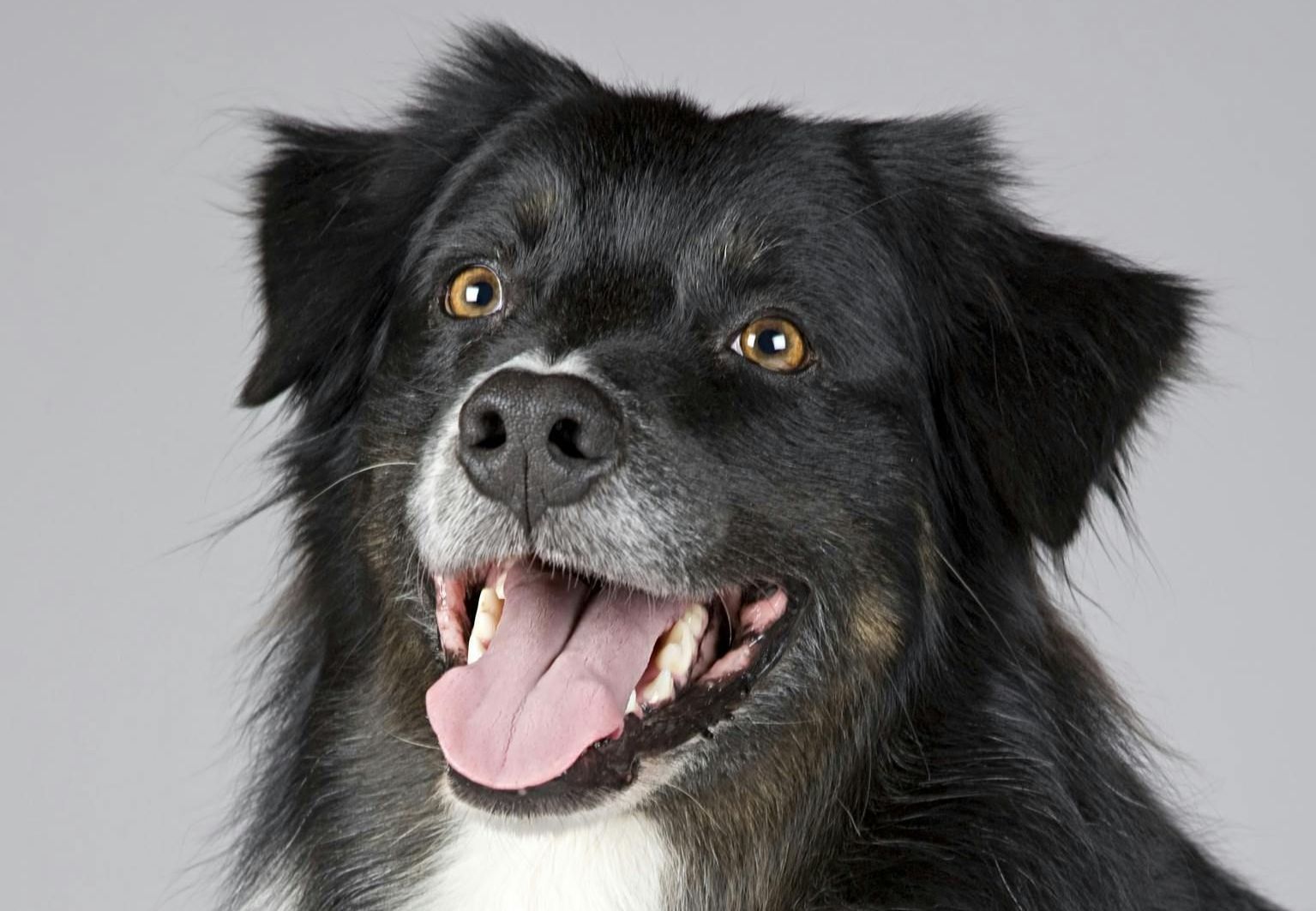
After 82 years, we are keenly aware that loss takes many forms. Grief isn’t limited to the passing of a spouse, sibling, child, or friend, the pain that comes with the loss of cherished animal companion—be it a dog, cat, or anything else—can be just as profound. Our pets are family members and losing them often triggers an overwhelming sense of grief, leaving us with a deep emotional void. Dogs and cats can be sources of unconditional love, and the loss of that unconditional love is often devastating. The Deep Bonds We Share with Our Animals Dogs, cats, and other pets hold a special place in our hearts. They’re more than animals; they are companions, confidants, and providers of the boundless devotion that so many of us treasure. Whether it’s the excited welcome home after a long day at work or the comfort of your cat purring contentedly while curled up next you, pets offer an unwavering level of loyalty and affection. Pets are also a source of great emotional support during difficult times. How many folks reading this adopted a dog or cat during the pandemic, for instance? Their presence can reduce loneliness, lower stress levels, and provide a sense of purpose. This bond is what makes their loss so painful. When a pet dies, we lose both their companionship and comfort they brought into our daily lives along with the routine rhythms of walks, playtime, feeding, and care they require each day. Why the Grief is So Deep Grieving the loss of a pet can be just as intense as grieving for a human loved one—and sometimes, it hurts even more. Here’s why: 1. Unconditional Love and Dependence Pets offer us unconditional love. Unlike most human relationships and the complex emotions they often include, the bonds between us and our pets is often pure and simple. They depend on us for food, shelter, and care; in return, we rely on them for emotional connection and purpose. Losing that constant presence can feel like losing an anchor in your life. 2. Routine and Rituals Pets are an integral part of our daily routines. From the morning walk to the evening feeding to the adventures we share with them and all of the quiet moments we spend together in between, our pets become woven into the fabric of our day-to-day lives. When they’re gone, those routines are disrupted, leaving us with a massive absence that can trigger feelings of deep sadness and disorientation. 3. A Silent Grief One of the biggest challenges of pet loss is that it can feel isolating—after all, not everyone understands the depth of the bond you shared with your pet, and sometimes people will simply fail to grasp the significance of this loss. However it’s intended, when people say things like, "she was just a dog," or "you can get another cat," they can make you feel like your grief isn’t valid. At Keohane, we want to remind you that your feelings are completely valid! Grieving a pet is as natural and necessary as any other loss you’ll experience. Coping with the Loss of a Pet There is no right or wrong way to grieve the loss of a pet. Each person’s grief journey is unique, though there are a few steps you can take to help navigate this difficult period: 1. Allow Yourself to Mourn It’s important to give yourself permission to grieve. Acknowledge your feelings and recognize that it’s okay to be deeply saddened by the loss of your pet. Don’t rush the process or compare your grief to anyone else’s. It’s your journey, and it’s personal. No one will understand the bond between you and your pet the way you do, after all. 2. Create a Memorial Many people find solace in honoring their pet’s memory. You might create a special place in your home or garden where you can reflect on the joy they brought into your life. People will often choose to frame a favorite picture, plant a tree in their pet’s honor, or keep a memento that reminds them of their companion. Some folks will get their pet’s paws or face tattooed on their bodies or make a donation to an animal rescue organization. It’s entirely up to you. 3. Seek Support You don’t have to go through this alone. Talk with people who understand the depth of your bond with your pet—friends, family members, or a counselor. There are also pet loss support groups, both online and in-person, where you can share your grief with others who have experienced similar losses. 4. Consider a Ritual Some people find closure in holding a special ceremony or ritual for their pet. This could be as simple as lighting a candle in their memory or writing a letter expressing your feelings. There are people who opt to hold a memorial service for their pets. These rituals can give you a sense of peace and help you move through the stages of grief. Keohane’s Commitment to Compassion The Keohane team knows how important it is to provide compassionate support for all kinds of loss. Whether you’re mourning the loss of a pet or a human loved one, we’re here to support you in your time of grief. Pets are family, and we honor the deep connections you share with them. Grief has no timeline, and the loss of a beloved pet can leave a lasting impact. Remember that it's okay to feel what you're feeling, and there is no "right" way to grieve. At Keohane, we are always available to offer guidance, empathy, and support during life’s most difficult moments.
A headstone will stand at your loved one’s final resting place long after the funeral service and burial. Exposure to New England’s four seasons and unpredictable weather can take a toll on the physical beauty of these markers. The Keohane team understands the importance of maintaining these special monuments and want to help you to do so by sharing this detailed guide on how to clean a headstone properly—and respectfully. Preparation: 7 Necessary Items: A soft-bristled brush: A brush with natural fibers is ideal for a delicate cleaning job like this Non-ionic soap: This will be gentle on the stone. Brands including Simple Green, Dr. Bronner’s Castile Soap, and Dawn Liquid Dish Soap are all solid recommendations for you. Water: Use distilled water if possible. It’s safer, especially if you have hard water coming from your tap. A plastic or wooden scraper: This will help you to safely removing any growths on the stone, such as moss or bird droppings. Soft cloths: These will allow you to dry the stone without causing any abrasions. A spray bottle: For the even application of water…and ease of portability. A bucket: To mix your cleaning solution and an easy way to carry all of your cleaning materials back and forth. Step-by-Step Cleaning Instructions: 1. Assess the Stone Before you do any actual cleaning, take a close look at the headstone. If you see any damage to the stone, such as cracks or flaking, you’re advised to consult a professional before attempting to clean it. You don’t want to cause any further damage after all. 2. Wet the Stone Start by spraying the headstone evenly with plenty of water. Doing so will keep the cleaning solution from getting absorbed too deeply into the stone and inadvertently causing damage. 3. Prepare the Cleaning Solution Mix a small amount of the non-ionic soap with water, using the guidelines on the cleaning solution’s label or website. 4. Gently Clean the Stone Take your soft-bristled brush and gently scrub the headstone with the soapy water. Working the brush in a circular motion, start at the bottom of the stone so that you avoid dripping over already cleaned areas, which may cause streaks. 5. Rinse Thoroughly Regularly rinse the headstone with clean water to flush away the dirt and debris you’ve loosened and prevent soap buildup too. 6. Remove Moss and Lichen If you see clumps of moss or lichen, remove them carefully with your scraper. It’s important to be as gentle as possible to avoid scratching the stone. 7. Final Rinse and Dry Once you’ve cleaned the headstone thoroughly and are satisfied with the result, rinse it a final time and pat it dry gently with your soft cloth. Additional Tips: Don’t use harsh chemicals: Never use bleach or acidic cleaners. These can corrode or even cause permanent stains on the stone. Test first: Always test your cleaning method on a small, less visible area of the headstone before proceeding, like the back or very bottom of the stone. Consider the weather: Aim for a cool, cloudy day for this cleaning project. Too much sun can cause rapid drying that will leave residue and streaks. Taking your time to clean a headstone can be a unique way to connect with and remember a loved one. By following these guidelines and cleaning regularly, you’ll honor their memory in a noble way. At a practical level, it’s also a way to protect what can be an expensive tribute. If you have any concerns or need professional assistance, don’t hesitate to contact a Keohane team member with your questions. We're here to help preserve the legacies of your loved ones.
A new trend has emerged in the last few years in which people choose to alter the approach to the end-of-life. The Living Funeral is a customized service that enables people to celebrate their lives with their family and friends while still here to enjoy this deeply meaningful experience. Living funerals offer a unique chance to embrace a full life, create more lasting memories, and spark open conversations about death. Embracing Life and Creating Special Memories More than a simple gathering, a living funeral is a celebration of one’s life. It’s a chance for you to look back on your journey through life, share your stories, and bask in love and appreciation from family and friends alike. Celebrations like these may include your favorite foods, music, and hobbies that hold special meaning for you. Rather than the typical somber funeral service, a living funeral is an opportunity to create an environment that’s filled with joy and warm nostalgia. The impact of a living funeral like this is profound—and profoundly positive. It allows your family and circle of friends to express their gratitude, heal old wounds in relationships, and find closure where it’s needed, while the opportunity still exists. If you’re the honoree, it’s an affirmation of your life and legacy, giving you a sense of comfort and peace during a time that may otherwise be filled with uncertainty. For your loved ones, it’s a cherished opportunity to say “thank you” and “I love you,” knowing that their words will be heard and felt. The Benefits of Speaking Openly About Death One of the key benefits of a living funeral is the chance it affords you to speak openly about death. Death is a taboo subject in many cultures and often avoided in conversation. Yet discussing death in plain terms can lead to a deeper understanding and acceptance of life’s natural cycle. Embracing this kind of open dialogue allows you to share your wishes for end-of-life care, funeral arrangements and charitable beneficiaries you’d like to acknowledge, and how you wish to be remembered. This transparency can alleviate the burden on your loved ones who might otherwise struggle having to make these decisions during a time of intense grief. In a way, it’s one more gift to your loved ones before you pass. Plus, speaking openly about death may reduce your fear and anxiety about it. It may encourage you to live more fully and appreciate the present moment and inspire the people attending to live their lives in a similar fashion. Creating a Legacy of Love and Acceptance A living funeral can be a beautiful way to create a legacy of love and acceptance. It’s often a testament to a life well-lived and a special reminder of the impact you may have had on the lives of people in your family and network of friends. It allows you to leave these folks more than just memories; you’re also giving a sense of closure and peace. This growing trend of living funerals offers a transformative approach to the end of life. It celebrates your journey, cements meaningful connections, and encourages open conversations about death. At Keohane, we believe in honoring life in all of its stages. If you’re considering a living funeral or are curious to learn more, please contact us. We’re here to support you and your loved ones and help you create a celebration that reflects the beauty and significance of your life.
Family structures are more diverse than ever these days. As our society evolves, our traditions and practices need to evolve with them, including the ways in which we honor our loved ones when they pass on. We believe that memorial services ought to be inclusive, respectful, and reflective of the unique relationships that make up every family we serve. In this blog, we'll share with you how to incorporate these varied family structures into funeral ceremonies, enabling you to acknowledge and honor each of these special relationships. Recognizing the Diversity of Modern Families Modern families exist in many forms, such as blended families, single-parent families, LGBTQ+ families, families with adopted children, and more. Perhaps you recognize your family structure here? It's essential that we recognize and validate these diverse structures during memorial services so that everyone feels included and respected. Open Communication One of the most important steps when you’re planning an inclusive memorial service is open communication. Engaging each family member early in the planning process creates an opportunity to understand their individual desires and perspectives. Doing so can help you make sure that no one feels they’ve been excluded during an already difficult time emotionally. Encouraging your family members to share stories, memories, and special traditions that can be incorporated into the service helps to create a sense of inclusivity that can lift everyone’s spirits during an otherwise challenging period. Personalize the Ceremony Having gathered anecdotes and cherished memories from your family members, personalizing the ceremony to reflect the unique life and relationships of the deceased leads to deeply meaningful ways to honor their memory. Here are three such examples for you to consider: 1. Custom Eulogies: Invite multiple family members and close friends to share their own memories, or offer a eulogy. This allows for a richer, more diverse representation of the deceased's life and relationships. 2. Photo Displays: Create a photo collage or video that includes pictures from all stages of their life (if available), celebrating friendships, family events, special moments, and highlighting the connections among these various relationships that made a significant impact on the deceased's life. 3. Symbolic Gestures: Incorporate symbolic gestures that hold special meaning for different family members, like lighting candles, releasing balloons, creating a fundraising event, or planting a tree or garden in memory of the loved one. Inclusive Rituals and Traditions Weaving diverse rituals and traditions into the memorial service can help provide another way to respect and honor any cultural and religious backgrounds within your family. A few ways to do this include: 1. Multicultural Elements: If the deceased or your family members come from different cultural backgrounds, consider including some elements from these cultures in the ceremony. This could include representative music, readings from treasured books, or traditional rituals. 2. Interfaith Considerations: If your family includes members of various faiths, find ways to incorporate interfaith prayers or rituals, or readings that honor the beliefs of all family members. 3. Non-Religious Options: Some families prefer a non-religious service that focuses on celebrating the life and values of the deceased through personal anecdots, music, and meaningful activities. For instance, was the decedent a Deadhead? Including music from a favorite show could be a lovely way to celebrate this aspect of them. Respecting Unique Relationships Every relationship is a unique relationship, with its own dynamics. It’s important to acknowledge and honor these connections during the memorial service. Consider these: 1. Acknowledging All Relationships: Make sure that the service acknowledges and honors all significant relationships in the deceased's life, regardless of their structure (biological, adopted, chosen, or otherwise). 2. Inclusive Language: Use inclusive language that respects the dynamics of your family structure and relationships. Avoid assumptions about roles or titles, and be mindful of how different family members may identify. It’s okay to ask family members or close friends how they’d prefer to be addressed! 3. Special Roles: Is it possible to give different family members and friends special roles, such as reading a poem, performing a song, or leading an aspect of the service? This can to a long way in ensuring that everyone feels involved and recognized. Creating a Welcoming Atmosphere Creating a welcoming and inclusive atmosphere is a vital key for a successful and respectful memorial service: 1. Venue Considerations: Choose a venue that’s accessible and welcoming to all of your family members and friends, including those with disabilities or special needs. Consider that some attendees may need to bring a care provider with them. 2. Hospitality: It’s important that all guests feel welcome and comfortable attending the memorial. Hospitality may include offering refreshments, having a sign-in book, or offering grief support for those who may need it. 3. Sensitivity and Empathy: Approach the planning and execution of the service with sensitivity and empathy. This is a very emotional time for everyone involved, after all. Kindness matters here more than ever. The Keohane team is committed to helping families like yours to create inclusive, respectful, and meaningful memorial services that will honor the unique lives and relationships of your loved ones. In embracing diverse family structures, we can be certain that every service is a true reflection of the individual being celebrated.
First responders hold a special place of honor in South Shore communities. The courage, selflessness, and dedication our police officers, firefighters, paramedics, and EMTs show every day in protecting and serving others defines heroism. The Keohane team understands the importance of honoring these remarkable people when they make the ultimate sacrifice in their service. Planning funerals and memorials for our first responders involves a number of special considerations to ensure tribute is paid appropriately to their service and secure their legacy with the utmost respect.
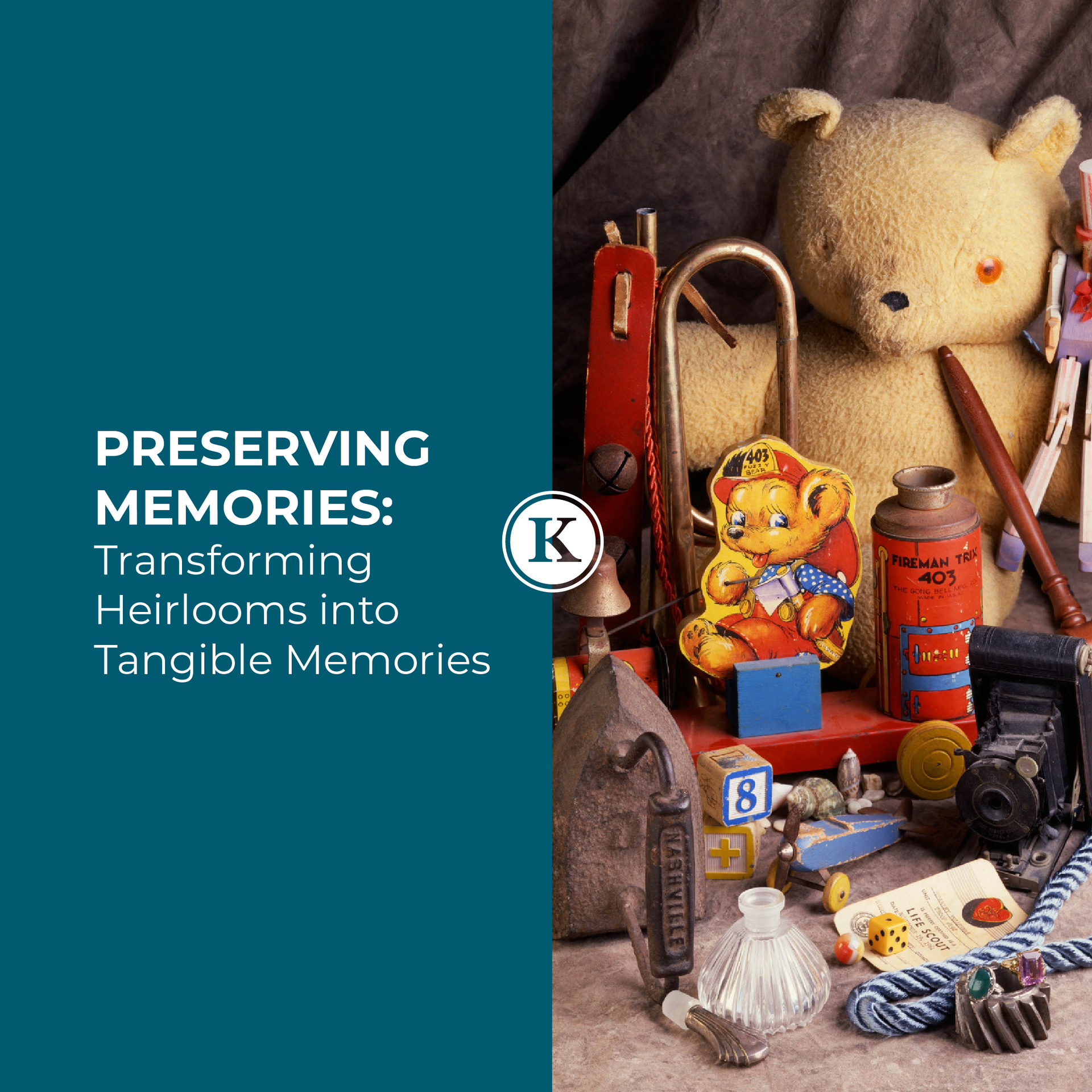
At Keohane, we understand the importance of these family heirlooms. We know that they’re more than simply objects; they are repositories of memories, stories, and emotions. Whether a vintage locket worn by your great-grandmother or a baby blanket passed down through the generations, each heirloom holds a piece of your family’s narrative. They serve as tangible connections to our ancestry, reminding us of who we are and who they were.

